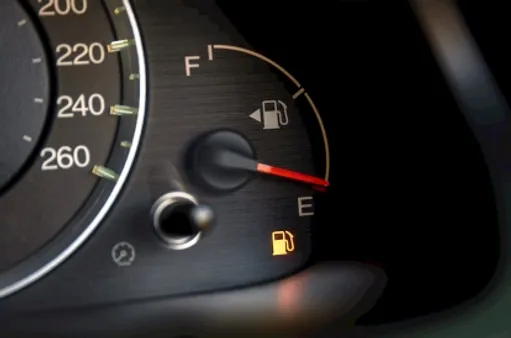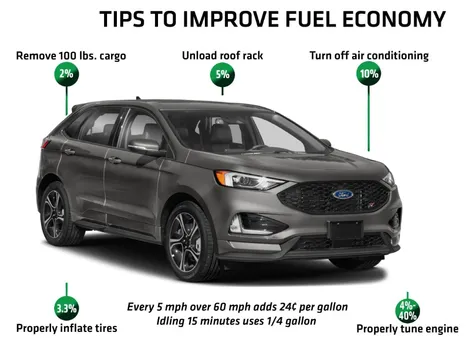Table of Contents
Welcome to Westernfordhcm's guide to Fuel Efficiency Tips for Ford Everest Owners. In today's fuel-conscious environment, optimizing your vehicle's performance is more important than ever. This comprehensive guide provides a wealth of practical tips and strategies to help you enhance your Everest's fuel economy, reduce operating costs, and enjoy a more efficient driving experience. Whether you're a seasoned driver or a new Everest owner, this guide empowers you to make informed decisions that will improve your driving experience and fuel efficiency.

Fuel Efficiency Tips for Ford Everest Owners: Achieving a Greener, More Economical Ride
I. Fuel Efficiency Tips for Ford Everest Owners at a Glance
Tip | Description |
|---|---|
Optimizing Tire Pressure | Ensure tires are inflated to the recommended pressure to reduce rolling resistance and improve fuel efficiency. |
Limiting Maximum Load | Avoid overloading the vehicle to prevent excessive fuel consumption. |
Hypermiling Techniques | Adopt fuel-saving practices such as smooth acceleration, anticipating stops, and maintaining a steady speed to maximize fuel economy. |
Utilizing Cruise Control | On highways, engage cruise control to maintain a steady speed and minimize variations in fuel consumption. |
Reducing Aerodynamic Drag | Close windows and avoid roof racks to reduce air resistance and improve fuel efficiency. |
Choosing the Right Tires | Opt for low-rolling resistance tires to minimize friction and enhance fuel economy. |
Avoiding Unnecessary Idling | Turn off the engine when idling for extended periods to save fuel. |
Incorporating Regular Maintenance | Regular maintenance, including oil changes, air filter replacement, and wheel alignments, ensures optimal engine performance and fuel efficiency. |
II. Tips for Driving More Fuel-Efficiently in Your Ford Everest
Hypermiling Techniques for Enhanced Fuel Economy
To maximize your Ford Everest's fuel efficiency, consider adopting hypermiling techniques. These practices include smooth acceleration to reduce fuel consumption during takeoff. Additionally, anticipating stops allows you to coast, saving fuel that would otherwise be used for braking. Maintaining a steady speed on highways reduces energy wasted on speed fluctuations.
Additionally, it is recommended to avoid unnecessary idling. When stopped for extended periods, consider turning off the engine to conserve fuel. Incorporating these hypermiling techniques into your driving habits can significantly improve your Everest's fuel economy.
Read more about these techniques
Cruise Control Benefits for Highway Fuel Economy
When driving on highways, engage cruise control to maintain a steady speed. Cruise control minimizes variations in fuel consumption, making it more efficient than manual acceleration and deceleration. By utilizing cruise control, you can optimize your Everest's fuel economy on long highway trips.
Aerodynamic Modifications for Reduced Drag
Learn more about aerodynamic drag
Proper Tire Selection for Improved Fuel Economy
Choosing the right tires can also contribute to better fuel economy. Look for tires with low rolling resistance, which reduces the energy required for the tires to roll, leading to improved fuel efficiency. By selecting the appropriate tires for your Ford Everest, you can optimize its performance and save money on fuel.
To further enhance your Everest's fuel efficiency, consider following additional tips:-Maintain correct tire pressure: Proper tire pressure reduces rolling resistance, improving fuel economy.-Limit maximum load: Overloading can put a strain on your engine, reducing fuel efficiency.-Incorporate regular maintenance: Regular maintenance, including oil changes and air filter replacement, ensures optimal engine performance.-Reduce unnecessary idling: Turning off the engine when stopped for extended periods can save fuel.
III. Maintaining Your Ford Everest for Optimal Fuel Efficiency
Regular Maintenance
Regular maintenance is crucial for maintaining your Ford Everest's fuel efficiency. By following the recommended maintenance schedule, you can ensure that your vehicle is operating at its peak performance and consuming fuel optimally. Regular maintenance includes oil changes, air filter replacements, and wheel alignments, which help keep your engine running smoothly and reduce rolling resistance.
Related Post: Maintenance Checklist for Ford Everest Owners
Tire Pressure Monitoring
Maintaining proper tire pressure is essential for fuel efficiency. Underinflated tires increase rolling resistance, leading to higher fuel consumption. Regularly check your tire pressure and adjust it to the recommended levels specified in your vehicle's owner's manual. This simple step can significantly improve your Everest's fuel economy.
Driving Habits
Your driving habits can significantly impact your fuel efficiency. Avoid aggressive acceleration and braking, as these actions waste fuel. Instead, accelerate smoothly and anticipate stops to minimize fuel consumption. Additionally, maintaining a steady speed on highways can help reduce drag and improve fuel economy.
Load Management
Overloading your Ford Everest can put a strain on the engine and increase fuel consumption. Avoid carrying unnecessary weight in your vehicle, and distribute the load evenly to minimize its impact on fuel efficiency.
Aerodynamic Enhancements
Reducing aerodynamic drag can improve fuel efficiency. Close windows and avoid using roof racks when not necessary, as these can increase air resistance and lead to higher fuel consumption.
Fuel-Efficient Tires
Choosing fuel-efficient tires can make a noticeable difference in your Everest's fuel economy. Look for tires with low rolling resistance, which means they require less energy to roll, resulting in improved fuel efficiency.
Avoiding Unnecessary Idling
Idling your engine for extended periods wastes fuel. Turn off your engine when waiting in traffic or making brief stops to conserve fuel.
Incorporating Technology
Modern Ford Everest models offer advanced technologies that can assist with fuel efficiency. Utilize cruise control on highways to maintain a steady speed and reduce fuel consumption. Additionally, consider using the Eco Mode feature, which adjusts engine and transmission settings to optimize fuel economy.
IV. Fuel-Efficient Modifications for Your Ford Everest
To further enhance your Everest's fuel efficiency, consider these modifications:
- Optimized Aerodynamic Enhancements: Install a front air dam, wheel arch extensions, and tailgate spoiler to streamline airflow and minimize drag.
- Reduced Rolling Resistance Tires: Replace heavy factory tires with low-rolling resistance all-season or highway-terrain tires for reduced rolling friction.
- Optimized Suspension Tuning: Install lowered suspension springs or an adjustable suspension system to reduce overall ride height, reducing aerodynamic drag and improving stability.
V. Conclusion
By implementing these Fuel Efficiency Tips for Ford Everest Owners, you can significantly enhance your vehicle's fuel economy, save money on fuel costs, and contribute to a more environmentally sound driving experience. Embrace these strategies and experience the improved performance and eco-friendliness of your Ford Everest.

Fuel-Efficient Modifications for Your Ford Everest
VI. Additional Tips to Enhance Fuel Efficiency in Your Ford Everest
In addition to the strategies outlined above, consider these additional tips to further enhance fuel efficiency in your Ford Everest:
- Avoid excessive idling: Leaving your engine running while parked can waste fuel. Turn off the engine when idling for extended periods, such as when waiting in line or at a traffic light.
- Use cruise control on highways: Maintaining a steady speed on highways can improve fuel economy. Engage cruise control to avoid unnecessary acceleration and deceleration.
- Plan your trips: Combining errands and avoiding unnecessary trips can reduce the number of miles you drive, saving fuel.
- Remove unnecessary weight: Excess weight in your vehicle can decrease fuel efficiency. Remove any unnecessary items from your Everest to reduce its weight.
- Maintain proper tire pressure: Underinflated tires increase rolling resistance, which can reduce fuel economy. Ensure your tires are inflated to the recommended pressure.
By implementing these additional tips, you can maximize the fuel efficiency of your Ford Everest and save money on operating costs while reducing your environmental impact.

Additional Tips to Enhance Fuel Efficiency in Your Ford Everest
VII. Conclusion
Fuel efficiency is a crucial aspect of vehicle ownership, and by adopting the tips outlined in this guide, Ford Everest owners can significantly improve their vehicle's performance and reduce fuel consumption. From maintaining optimal tire pressure to practicing hypermiling techniques, these strategies provide a comprehensive approach to maximizing fuel economy. Implementing these practices not only saves money on operating costs but also contributes to environmental sustainability. By embracing these fuel-saving measures, you can enhance your driving experience while enjoying the benefits of a more efficient and eco-friendly vehicle.